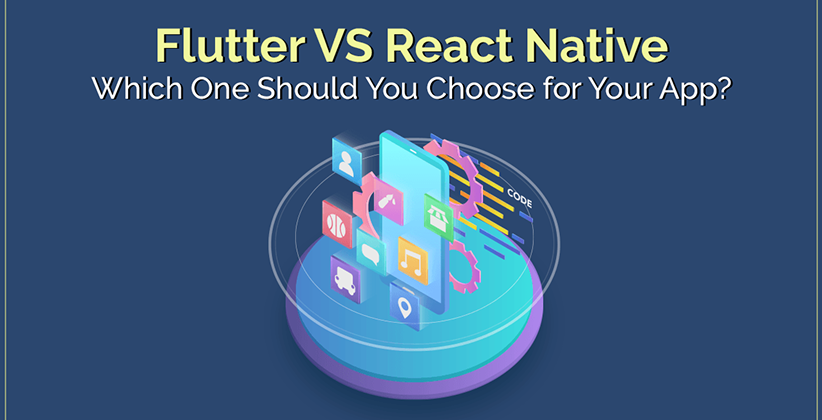
When it comes to cross-platform mobile app development, Flutter and React Native are two of the most popular frameworks. Both allow developers to build high-quality mobile applications for iOS and Android using a single codebase, but they differ in various aspects such as performance, development speed, and ecosystem.
If you’re wondering which one to choose for your next project, this guide will break down the key differences to help you decide.
What is Flutter?
Flutter is an open-source UI framework developed by Google, designed for building natively compiled applications for mobile, web, and desktop from a single codebase. It uses the Dart programming language and provides a rich set of pre-designed widgets.
Pros of Flutter:
✅ Fast Development – The hot reload feature allows developers to instantly see code changes without restarting the app.
✅ Beautiful UI – Flutter’s widget-based architecture ensures a highly customizable and consistent UI across platforms.
✅ High Performance – Compiles to native ARM code, delivering smooth animations and fast execution.
✅ Strong Community Support – Backed by Google, Flutter has a growing ecosystem and frequent updates.
Cons of Flutter:
❌ Larger App Size – Flutter apps tend to have a bigger file size compared to React Native.
❌ Dart Language Learning Curve – Dart is not as widely used as JavaScript, requiring developers to learn a new language.
❌ Limited Native APIs – Although improving, Flutter still relies on third-party plugins for some native functionalities.
What is React Native?
React Native, developed by Facebook, is a JavaScript framework that allows developers to create mobile applications using React and native platform capabilities. It is widely used by companies like Instagram, Airbnb, and Tesla.
Pros of React Native:
✅ JavaScript & React-Based – Uses JavaScript, making it easier for web developers to transition into mobile app development.
✅ Large Community & Ecosystem – Since it’s been around longer than Flutter, React Native has a vast number of libraries and third-party plugins.
✅ Code Reusability – Developers can reuse code across mobile and web applications, reducing development time.
✅ Easy Integration – Works well with existing native applications, allowing for gradual adoption.
Cons of React Native:
❌ Performance Limitations – Since React Native bridges JavaScript to native code, performance is slightly lower compared to Flutter.
❌ Complex UI Customization – While it offers flexibility, achieving complex animations and UI designs can be more challenging.
❌ Frequent Updates – React Native’s updates sometimes break existing functionalities, requiring developers to refactor code.
Flutter vs. React Native: Head-to-Head Comparison
| Feature | Flutter | React Native |
|---|---|---|
| Programming Language | Dart | JavaScript (React) |
| Performance | High (native compilation) | Moderate (JavaScript bridge) |
| UI & Design | Rich, customizable widgets | Relies on native components |
| Development Speed | Faster with hot reload | Fast, but depends on third-party libraries |
| Community & Support | Growing, backed by Google | Mature, backed by Facebook |
| App Size | Larger | Smaller |
| Learning Curve | Steeper (Dart) | Easier (JavaScript) |
Which One Should You Choose?
Choose Flutter if:
- You want a high-performance app with smooth animations.
- You prefer a custom UI design and consistent look across platforms.
- You don’t mind learning a new language (Dart).
Choose React Native if:
- You already have JavaScript/React experience.
- You need a smaller app size and easier integration with existing native apps.
- You want access to a larger ecosystem with more third-party libraries.
Final Verdict
Both Flutter and React Native are excellent choices for cross-platform app development. If performance and UI flexibility are your priorities, go with Flutter. If you prefer a mature ecosystem with JavaScript-based development, React Native is the better option.